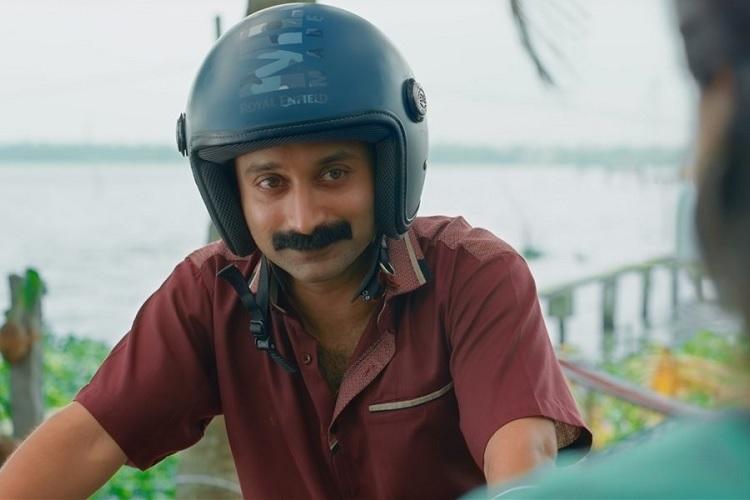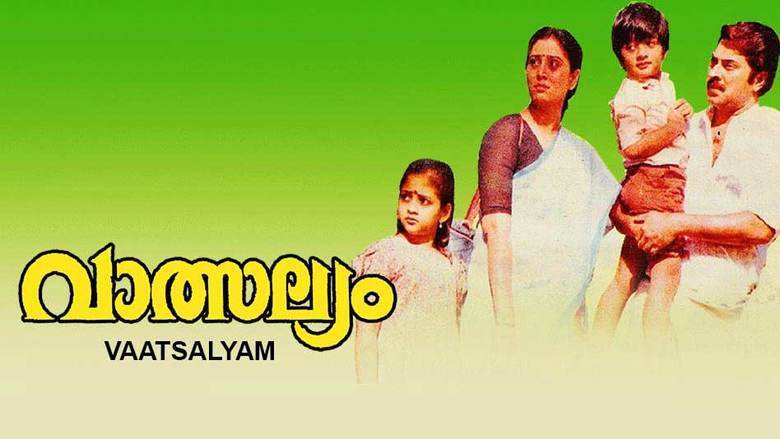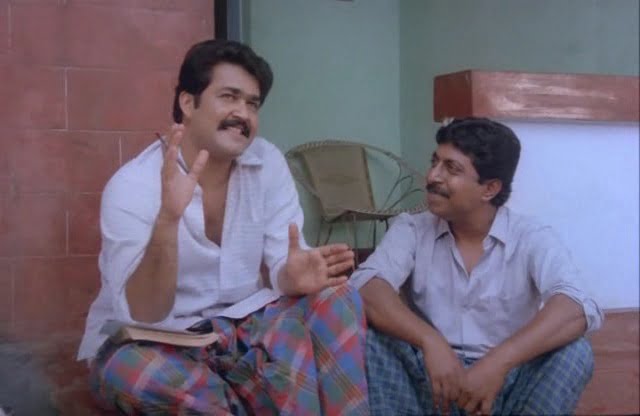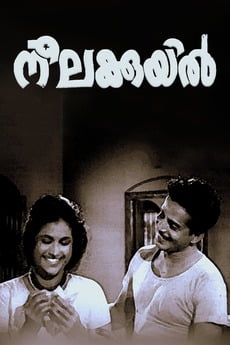Something is afoot in the Malayalam film industry. A group of creative directors and technicians are not just crafting their own aesthetic sensibility (popularly called ‘new-generation’ cinema), but questioning and subverting the (hyper-masculine) ideological narratives built and sustained by the industry in the neo-liberal era. Curiously, this is happening at a time when groups such as the Women in Cinema Collective (WCC) are attacking entrenched patriarchal norms and in a political climate that reasserts renaissance values, which (to a certain extent) democratized Malayali society. A case in point is the recent film, Kumbalangi Nights. What, on the surface level, is a simple story using the age-old trope of women as foil for reforming men, simmers with the possibilities of a radically new imagination of the Malayali family.
The first shot of the self-described hero and ‘complete man’, Shammy, played by Fahadh Faasil is his reflection in a mirror admiring his mustache, a marker of masculinity, and scraping off the (feminine) bindi that dares blemish it with his shaving blade. This is appropriate as it alludes to the two things that Malayalam cinema has historically shaped on screen – the image of the ‘traditional’ Malayali man and the erasure of Kerala’s matrilineal past. In fact the movie itself, with its use of contrasting characterizations, tones and scenes, is a commentary on this history.

Image Source: The News Minute
In Vatsalyam (1993), Mammootty is the sole provider for a Nair joint family, upon the death of his father. The nostalgic imagination of the tharavadu (ancestral home) is combined with the regressive idea that men have to know when to put a woman in her place. A slew of films of the period followed the same pattern – a harking-back to a feudal culture and a religious revivalism as an antidote to the fetters of a modernising society. Lost ‘tradition’ and ‘manliness’ are what films of this period mourned and sought to rebuild, even as society shifted towards individualism and consumerism. Shammy here literally takes the seat of the male patriarch in a household of women. His control is established not through overt violence, but through gestures that past films would goad the audience to read as sacrificial, protecting and upholding honour. In fact, it is the (uncomfortable) reactions of the women here that let us know that they are not so.

In Nadodikkattu (1987), one among a series of films that revolve around the classic bromance between Mohanlal and Sreenivasan, caste differences were wished away to depict a homosocial bond, even as movie after movie made a laughing stock out of the lower-caste character. If the singular (upper-caste) male hero in the conventional Malayalam film is a performance of domination over the upper-caste woman, the popular chiri padangal created a hierarchy of masculinities from different social locations competing with each other to prove their manhood. In Kumbalangi Nights, it is this singular hero that must be vanquished – whether by way of a lower-caste character standing up for himself instead of carrying around his friend’s wireless speakers, or through a group of Latin Catholic brothers using their ‘traditional’ occupational skills to get the better of a caste Hindu patriarch. In both cases, the impetus is provided by love towards women characters who are shown to be strong and independent – it is the male characters who have to step up to deserve them.
In Kumbalangi Nights, it is this singular hero that must be vanquished – whether by way of a lower-caste character standing up for himself instead of carrying around his friend’s wireless speakers, or through a group of Latin Catholic brothers using their ‘traditional’ occupational skills to get the better of a caste Hindu patriarch.

Image Source: My World Of Movies
In Neelakuyil (1954), a married upper-caste middle-class man seduces a Dalit farm labourer named Neeli, and upon her death from childbirth adopts the son because of his own sorrow at being childless. Even as it attempts to attack the caste ideology, the film’s logic is thus firmly entrenched in the patriarchal family and the value given to the son as progeny.

Image Source: LetterBoxd
Saji, played by Shoubin Shahir and his brothers in Kumbalangi Nights live in a dilapidated/unfinished house, but one which is always open to welcome the abandoned. What makes them a family is not the lineage that the brothers themselves do not all share, but the love and support that they provide each other. It is fitting, hence that what completes the family is not a son, but a single mother and her (female) child. Their own mother who ‘abandons’ them to seek the divine path is not judged for her failure to do her duty, but is compassionately allowed to be. In fact, the female characters are given the scope to react according to what they themselves might judge to be beneficial to them. It is the mother-in-law who straightens her posture when her son-in-law enters the room that decides he needs to be driven away.
Their own mother who ‘abandons’ them to seek the divine path is not judged for her failure to do her duty, but is compassionately allowed to be. In fact, the female characters are given the scope to react according to what they themselves might judge to be beneficial to them.
In How Old are You? (2014), the strong woman is depicted as the one who can win the respect and affection of her husband, even as she treads a professional path followed by few. Her success in the workplace is but a prelude to her compliance in the bedroom.
Here, however, the strength of the women is depicted in knowing when to express (or not) their desires according to their own terms, and when to act in a situation that threatens to disrespect them. It is when Simmy, played by Grace Antony, ventures outside her role of pliant wife and takes matters into her own hands that Shammy finally loses control and the film shifts genre from family drama to phantasmagoric horror (there is more than one shout out to The Shining). The makers seem to be suggesting that the strict confines of the family drama and its concomitant feminization of the private sphere are no longer enough to imagine the rising force of women in contemporary society.
Also read: Film Review: Love Action Drama —Misogyny Made Into A Movie
Significantly, all this means the screenwriter (national award winner Syam Pushkaran) has to rewrite not only the films of old, but his own as well. In Maheshinte Prathikaaram (2016), which was a twist on the revenge drama and a deliberation on associated masculinities, an emasculated man (cheated/ derobed/ professional capacity questioned) reshapes his life by getting better at his profession/ vanquishing his enemy/ winning a girl. The character arc in Kumbalangi Nights is no longer that crude. No more playing domestic violence for laughs. No more scoffing at the foolishness of questioning arranged marriages. No more dialogues which glorify one’s lineage through the bastardization of others. And more importantly, there is sympathetic treatment of marginalized men who are portrayed without a corresponding affirmation of their actions (whether their fights or their self-destructive drinking habits, or their leeching off of others). They are given the space to cry, to grieve, and to resist their alienation.
By the end of Kumbalangi Nights, when Saji for once wears a properly ironed shirt and the flowers are finally blooming and there are sounds of hummed lullabies much to the delight of Franky, the men have grown not by dominating those subordinate to them, but by reforming themselves.
Also read: Cinema Of Male Apathy: Rape Scenes In Malayalam Films Through The Ages
And while there might be a case for better-written women characters with independent character arcs, this (unlike recent movies like Varathan and Ishq, which had similar concerns) is a recognition that manhood is not the manifestation of an inner essence, but is created contingently through and in culture; and thus, can be unmade and remade.
Azhar is doing his Masters in Humanities in IIT Madras and is writing his thesis on representations of masculinities in contemporary Malayalam cinema. You can find him on Twitter.
Featured Image Source: GulfNews




